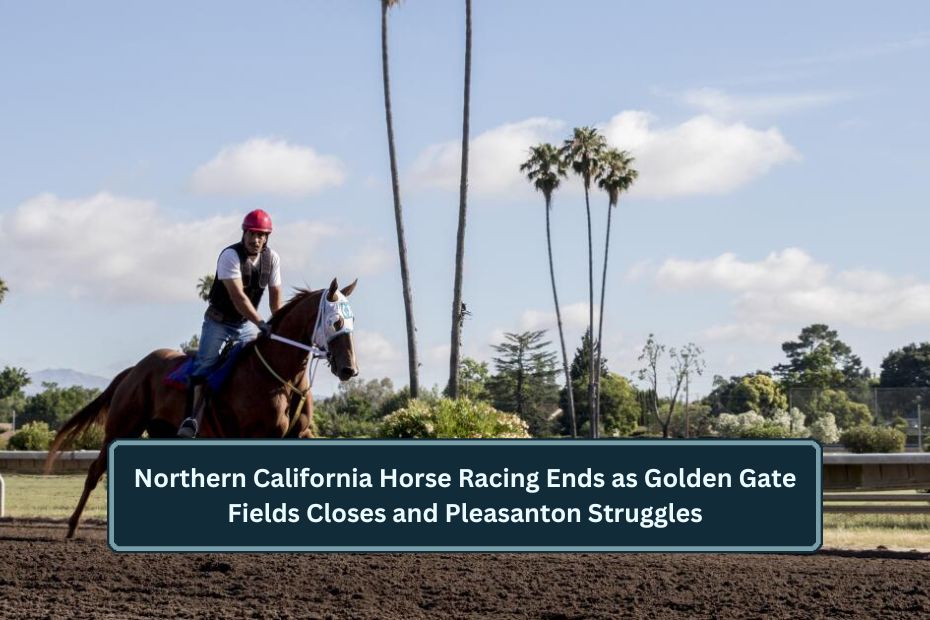Horse racing in Northern California has faced major challenges, especially with the closure of the Golden Gate Fields race track in Berkeley. This move, along with other changes, signals the end of an era for horse racing in the region. At the same time, another major shift is happening in San Antonio, Texas, where the city council voted to phase out horse-drawn carriages by 2030. Here’s a closer look at these two significant changes in the world of horses.
Horse Racing in Northern California Comes to a Halt
Northern California used to be home to some of the most popular horse racing events, but that is now changing. The Golden Gate Fields racetrack, which had been in operation for 82 years, closed its doors in December 2023. This marked the end of a long history of horse racing in the San Francisco Bay Area.
To fill the gap, a group called Golden State Racing tried to bring back thoroughbred racing by holding events at Pleasanton Fairgrounds. However, the first meet, which took place from October to December 2024, faced financial troubles. The number of people betting on the races (known as “handle”) dropped by over half compared to the old Golden Gate Fields days. As a result, the planned second meet, which was supposed to run from December 2024 to June 2025, was canceled.
The situation is so bad that experts believe the whole horse racing industry in Northern California is in danger. Some are even worried that it could affect the horse breeding industry, as fewer races means less need for horses to race. While racing at the county fair level is still planned for the summer, there are fears that trainers and other workers may move to Southern California where racing is still more popular.
The Stronach Group’s Plan to Save Racing in Southern California
The Stronach Group, which owns several major racetracks including Santa Anita Park in Southern California, has a plan to help the struggling Northern California racing industry. They’ve suggested that more horses and workers move to the south, where racing is doing better. This is part of a strategy to redirect money from racing in Northern California to Southern California.
While this plan might help racing in the south, it spells bad news for Northern California. If too many workers and trainers leave the area, it could cause further problems for the summer fairs and other smaller races.
Horse Carriages Banned in San Antonio
At the same time that horse racing is struggling, another major change is happening in San Antonio, Texas. The city council voted to ban horse-drawn carriages in downtown San Antonio, near the famous Alamo, by 2030. This makes San Antonio the first city in Texas to make such a decision.
The move comes after years of discussions and concerns over the treatment of the horses and the safety of the drivers and passengers. The decision allows carriage operators time to pay off their debts, which range from $67,000 to $700,000 per company.
This decision has sparked debate about what will replace the horses. One possibility is electric, horseless carriages, which could help the drivers find new work while still providing tours around the city.
What This Means for the Future of Horses in Public Life
Both of these events—horse racing ending in Northern California and the ban on horse-drawn carriages in San Antonio—reflect a larger trend in the United States where horses are slowly being removed from public life. While some people are pushing for the welfare of animals like racehorses and carriage horses, others worry about the loss of traditions and jobs tied to these industries.
In the case of horse racing, the closure of Golden Gate Fields and the struggles of Golden State Racing show just how tough it is for the sport to survive in Northern California. The Stronach Group’s decision to focus on Southern California may provide some temporary relief, but it’s unclear how long that will last.
For San Antonio, the decision to phase out horse-drawn carriages by 2030 is a big change for the city’s tourism. While there are concerns about the workers who rely on these jobs, the city council is offering a transition period for businesses to adjust.
Both situations show how much the role of horses in public life is changing and how important it is to consider both animal welfare and the livelihoods of those who depend on them.
Horse racing in Northern California and horse-drawn carriages in San Antonio are both facing significant changes. In Northern California, the closing of Golden Gate Fields and the struggles of Golden State Racing signal the end of a long-standing tradition in the region. In San Antonio, the decision to ban horse-drawn carriages by 2030 marks a major shift in how the city views horses in public spaces. These changes are part of a larger trend of moving away from the use of working horses in public life, raising important questions about the future of these industries and the animals involved.
Visit Home

